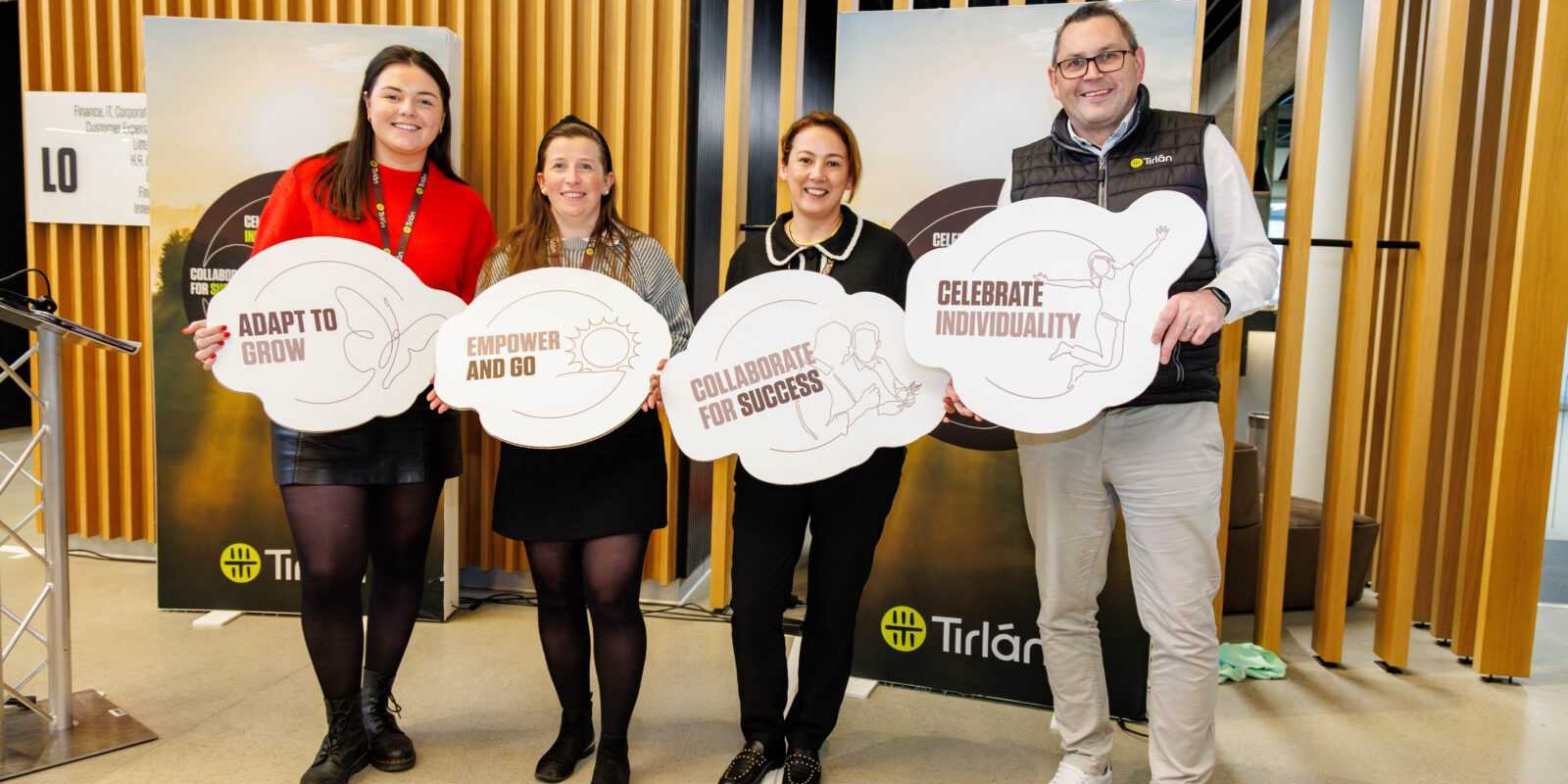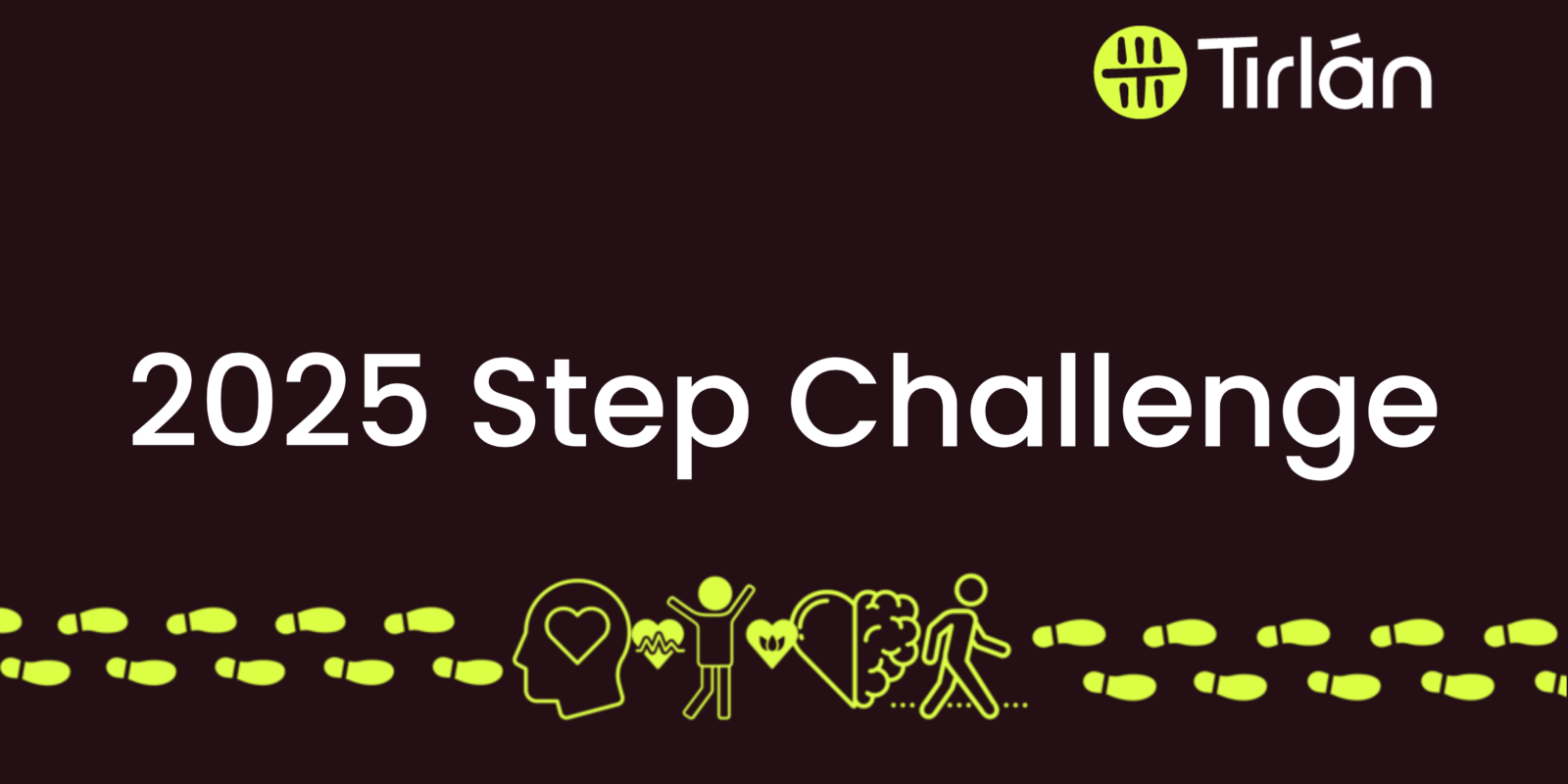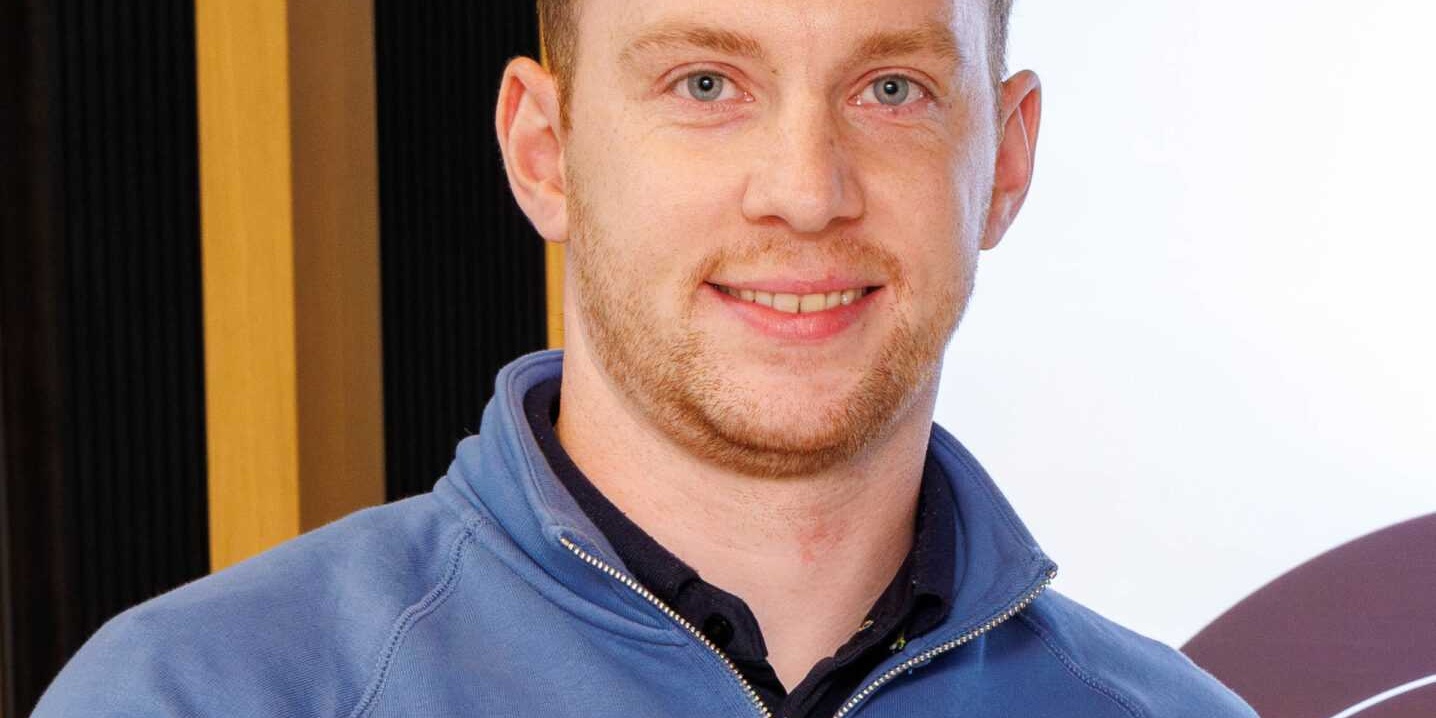
Gordon Grey, Thomas Ryan, Grace O’Dwyer, Brian Hanafin at the New Zealand national agriculture outdoor event ‘Field Days’ in Hamilton
A trip to NZ
A recent trip to New Zealand provides Tirlán with an insight into how other global co-operatives operate
Four Tirlán staff members including Brian Hanafin, Head of Milkpool and Technical Development and Grace O’Dwyer, Retail Marketing Manager, recently embarked on an information gathering exercise to New Zealand. The team concentrated their learnings on areas including milk quality, on-farm sustainability, the evolving regulatory environment and how farmers are serviced from a commercial standpoint.
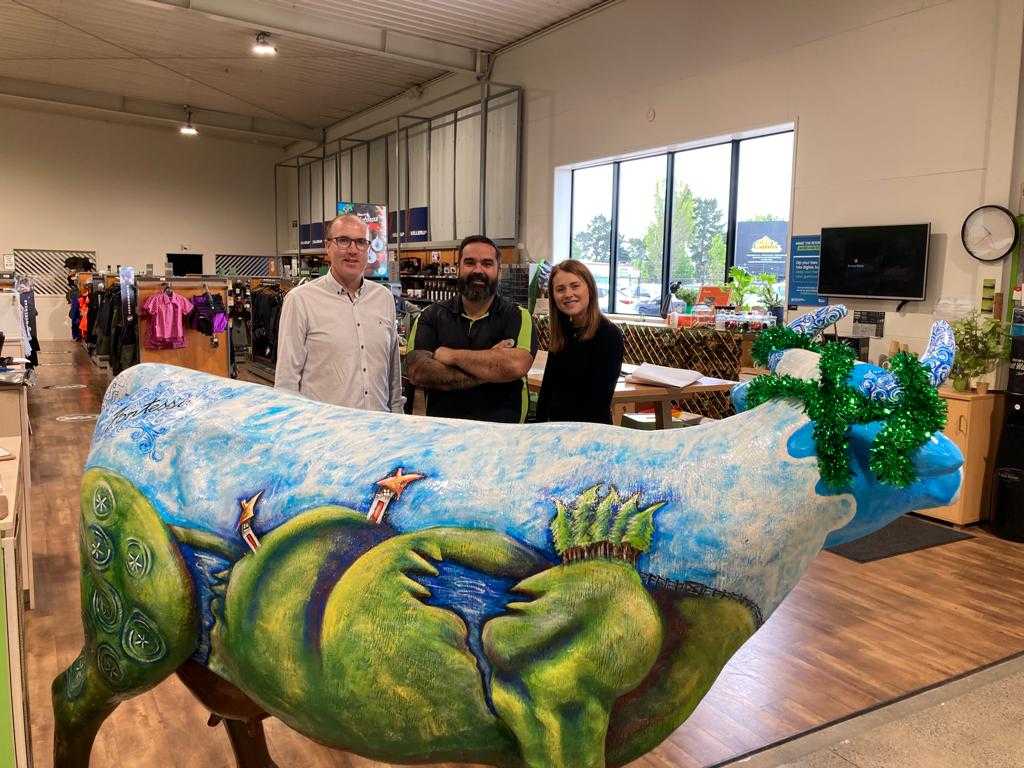
Thomas Ryan and Grace O’Dwyer with Fonterra/Farm Source Store Manager in Hamilton
Speaking with Overherd, Brian said: “Tirlán is on an ambitious journey to become one of the leading co-operatives in Europe, so it’s important we get a first-hand understanding of how other global co-operatives operate and what we can learn from them. Equally, it’s important for us at Tirlán to understand when we’re going above and beyond to deliver across the wide spectrum of activities we undertake on a daily basis. We took this trip to gain an insight into where farmers in New Zealand are in terms of sustainability, milk quality, procurement and equally to understand the country’s evolving regulatory environment. Similar to our own dairy industry, there are a mix of challenges and opportunities that New Zealand is grappling with. There’s a universal acceptance that some on-farm practices in New Zealand are no longer acceptable to regulatory bodies, customers and international consumers. The learnings and information that we’ve taken from the trip will prove invaluable going forward.”
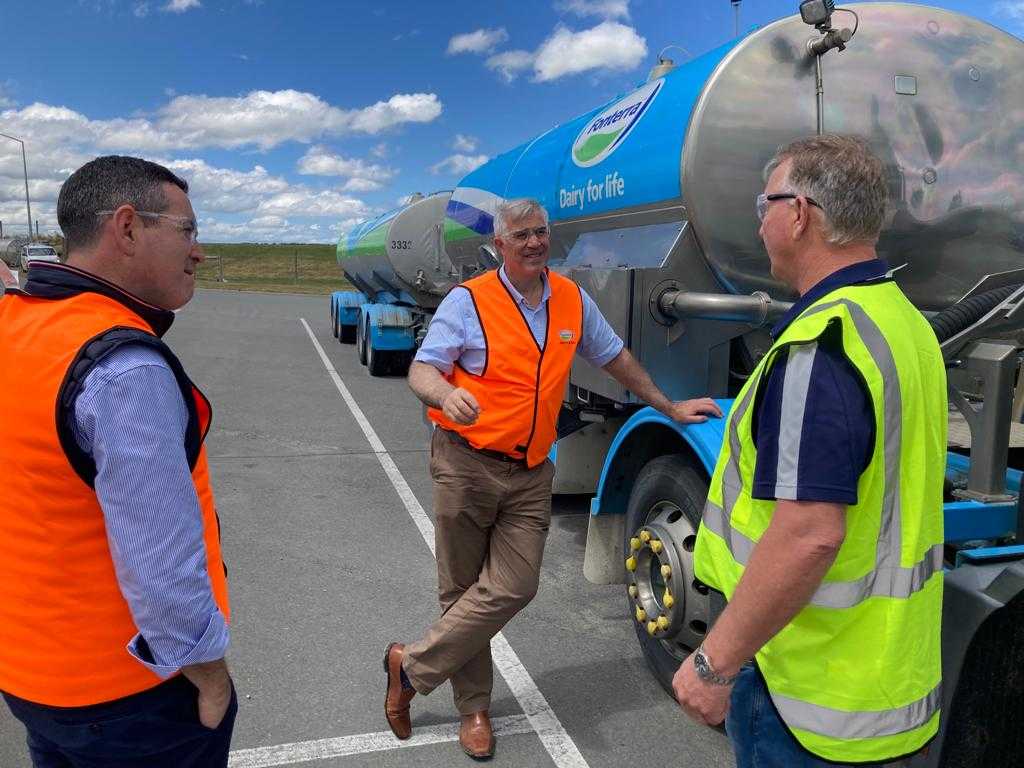
Brian Hanafin and Gordon Grey discussing milk quality standards with Fonterra representatives
While there, the group met 12 farmers who shared the challenges facing the agriculture sector in New Zealand. “It was great to hear about the approaches they’re adopting to help them overcome these challenges. Sustainability and innovation are very evident in the solutions they employ to help them farm more efficiently. I also spent a number of days with Fonterra Co-operative Group’s commercial arm, which was really interesting,” said Grace. Tirlán has invested in building relationships with key personnel in the milk supply function within Fonterra over the last number of years, sharing similar experiences and solutions in a pre-competitive space. “It’s on this basis that we selected the study trip to New Zealand, as it offered the best opportunity to understand a similar milk production model where we could benchmark performance across similar performance indicators,” added Grace.
In Figures – The New Zealand Dairy Industry
There are a lot of comparisons between Ireland and New Zealand’s dairy industry, mainly in relation to seasonal pasture-based systems, the low cost of production relative to barn-fed cows, large neighbouring markets and an inventory of natural resources that need to be protected for future generations. New Zealand is about three times the area of Ireland, with a national milk volumes of close to 22 billion litres of milk.
- 4.921 million dairy cows
- 11,179 herds
- 2.84 cows per hectare
- Average herd size is 440 cows (770 Canterbury)
- Average yield 4296 litres/average milk solids 385kgs
- 95% product exported worth 18.6 NZD, representing 23% total exports and 5.3% nominal GD





